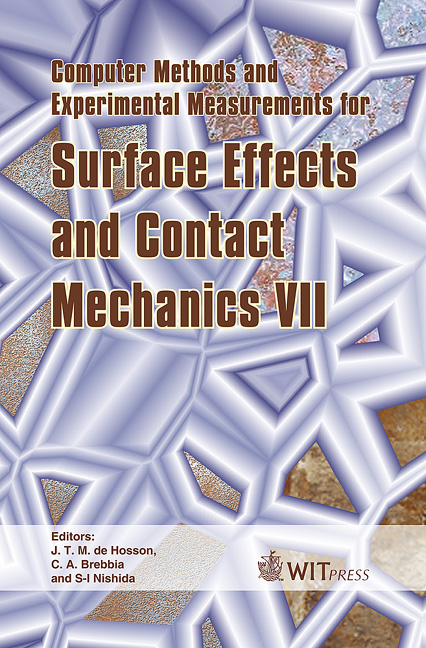Numerical Analysis Of States Of Strain And Stress Of Material During Machining With A Single Abrasive Grain
Price
Free (open access)
Transaction
Volume
49
Pages
10
Published
2005
Size
578 kb
Paper DOI
10.2495/SECM050061
Copyright
WIT Press
Author(s)
L. Kukielka, J. Kustra & K. Kukielka
Abstract
In papers [4, 7], a mathematical model was derived of a single-grain machining process in conditions of centreless continuous grinding. This model comprises discrete equations of the object’s motion and heat transfer together with initial and boundary conditions. In this paper, an effective solution of these equations has been presented. The manner of a partial linearization of the incremental motion equations has been shown, which allows for an application of an explicit method of integration, which makes use of an approximation with the method of central differences. As a result of this, it is possible to calculate vectors of displacements and temperature at the end of a given step on the basis of values concerning the previous step. For this method, an adequate algorithm of the solution of motion equations has been developed with the assumptions of Rayleigh’s proportional damping. Its application has been developed in the system of the ANSYS finite element method, which allows for a complex time analysis of the states of displacements, strains and stresses occurring in the set (which consists of an object, an abrasive grain and a binding agent, both for spatial and flat states). Numerical computations of the process of the object’s material strain have been conducted with the use of two methodologies. The first one requires an introduction of boundary conditions for displacements in the contact area determined in modeling investigation, while the second requires a proper definition of the contact zone through the introduction of finite elements of TARGET and CANTACT types, without the necessity of introducing boundary conditions. It is evident from the analyses conducted that forecasting of the physical properties of the surface layer in the centreless continuous grinding processes may occur on the basis of analyses of thermal phenomena and the state of strains in the machining zone. An analysis of machining with a model abrasive grain is the first stage towards a proper design and control of this complex technological process.
Keywords





